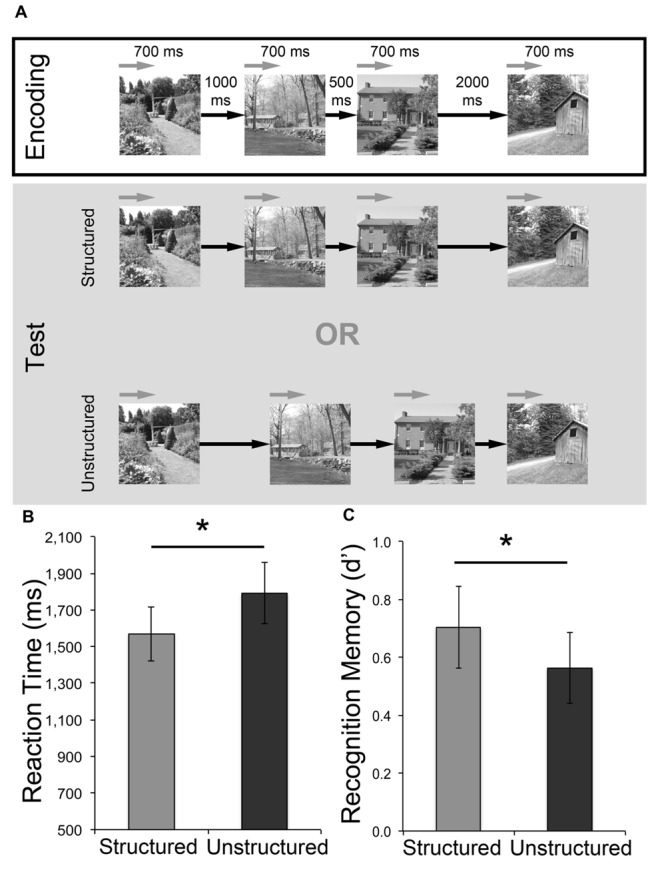FIGURE 3.

Effect of temporally structured and unstructured learning for incidentally encoded stimuli. (A) Participants were presented with trials in which they were instructed to monitor interval durations and make a match vs. mismatch decision. In the encoding phase of each trial participants saw four scenes separated by three intervals (mean: 500, 1000, 2000 ms). This was followed by a test phase, where the four scenes were repeated in the same order with their original interval durations (structured) or the rearranged interval durations (unstructured). The encoding and test phases were separated by a 3500 ms fixation cross, and participants were asked to indicate their response during a 2500 ms response screen showing the words “Change (1) or No Change (2)?” at the end of each test phase. (B) Mean reaction times for memory responses during the surprise recognition test. (C) Memory performance (as measured by d′) for the surprise recognition test. Error bars represent standard error of the mean. ∗p < 0.05.
